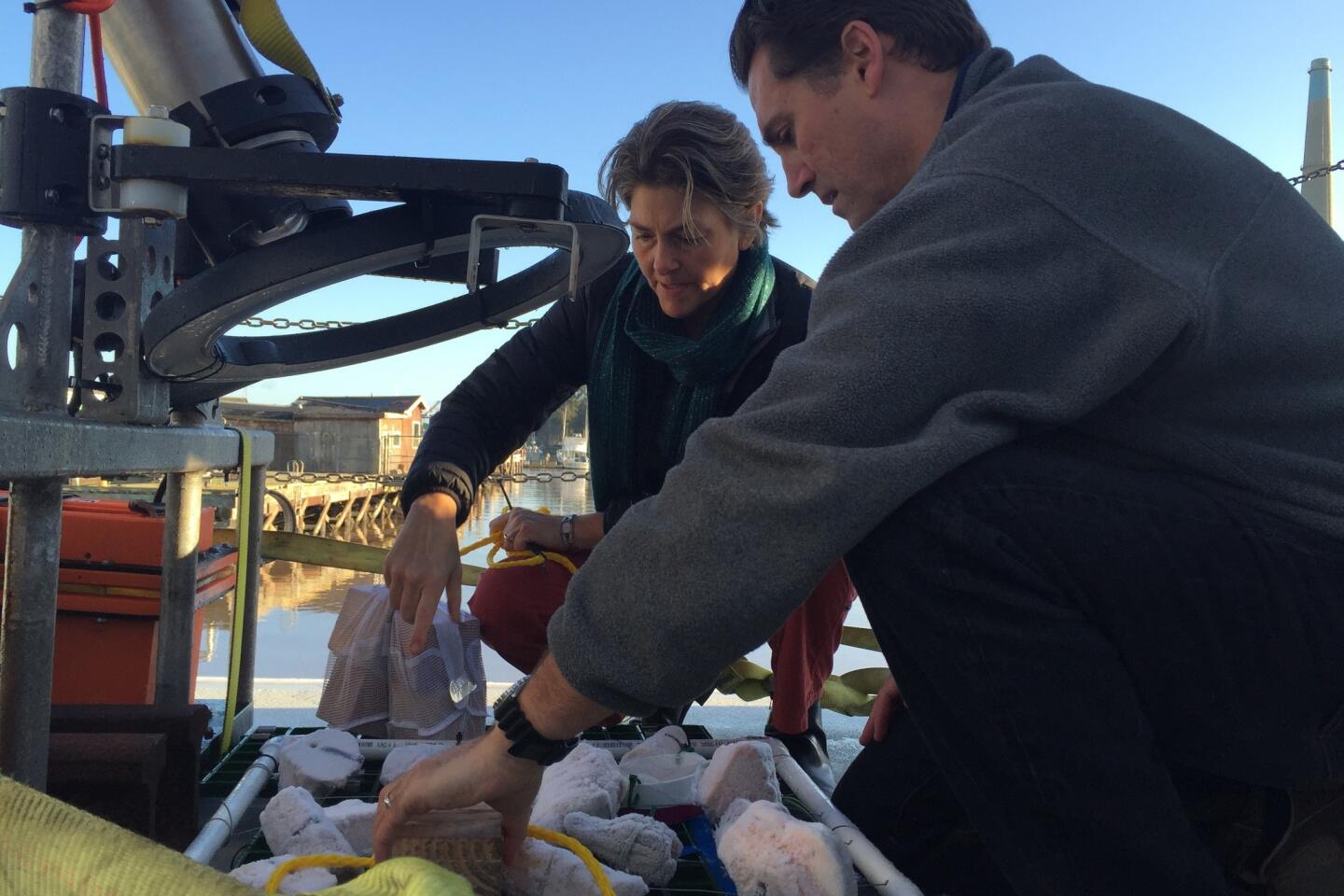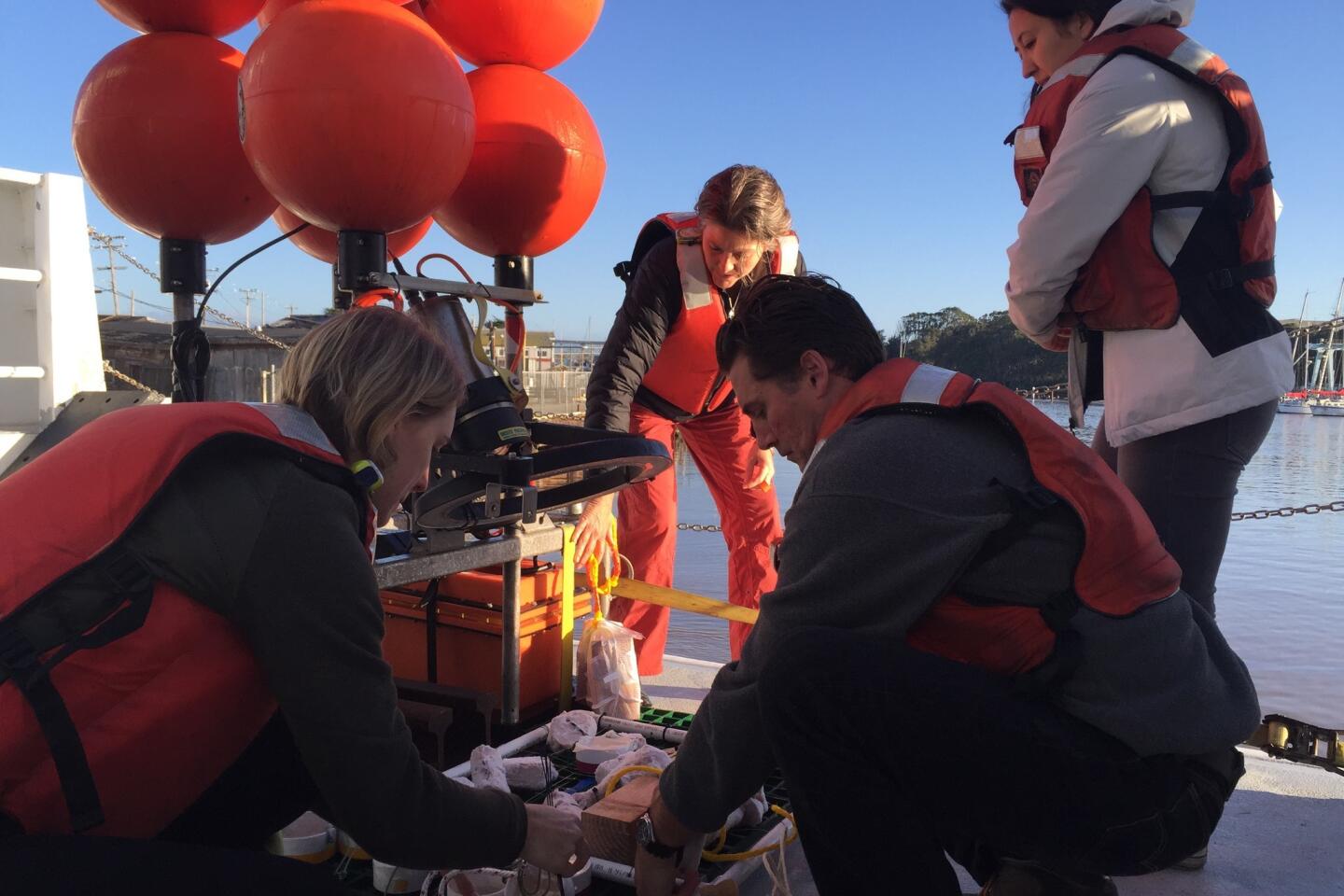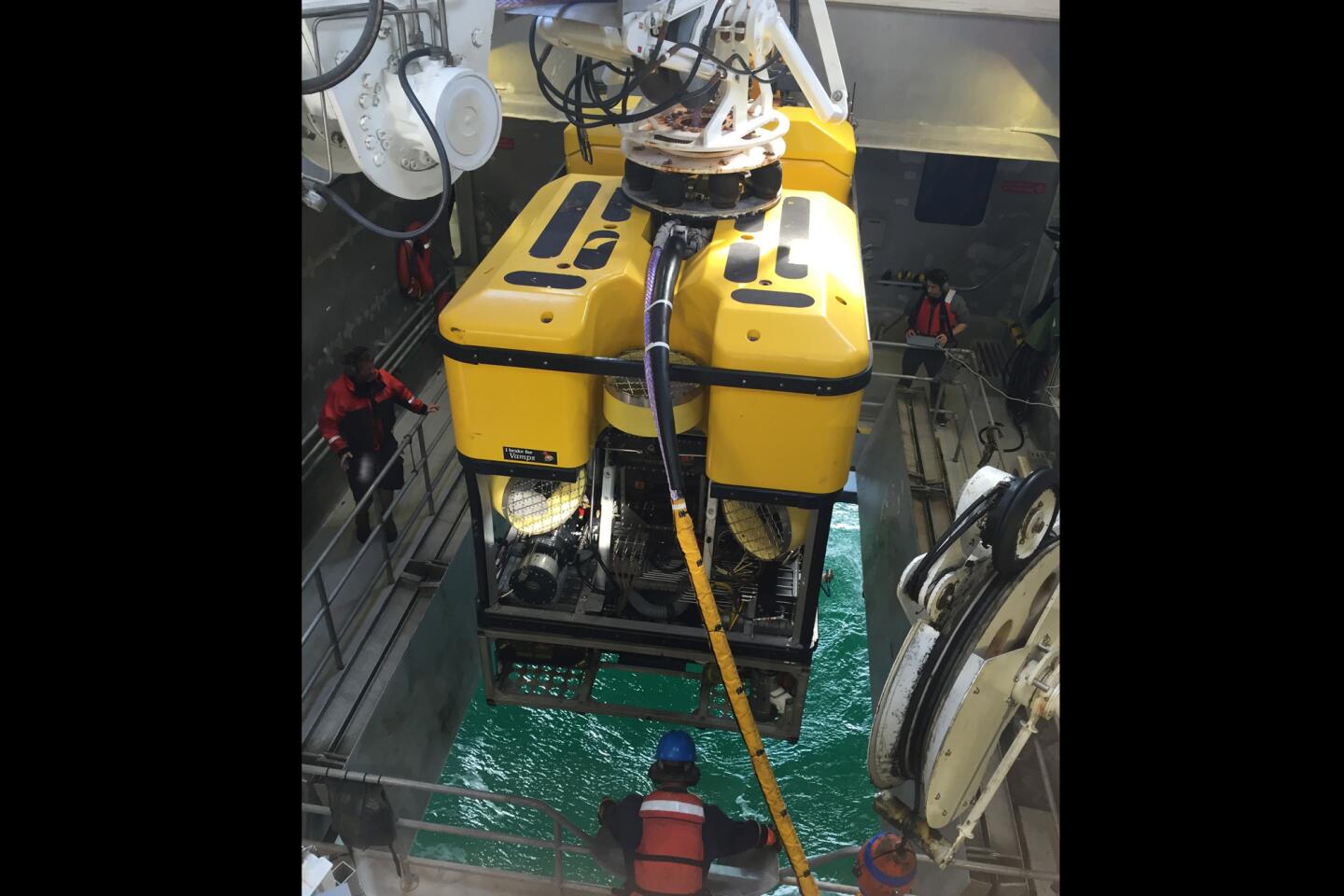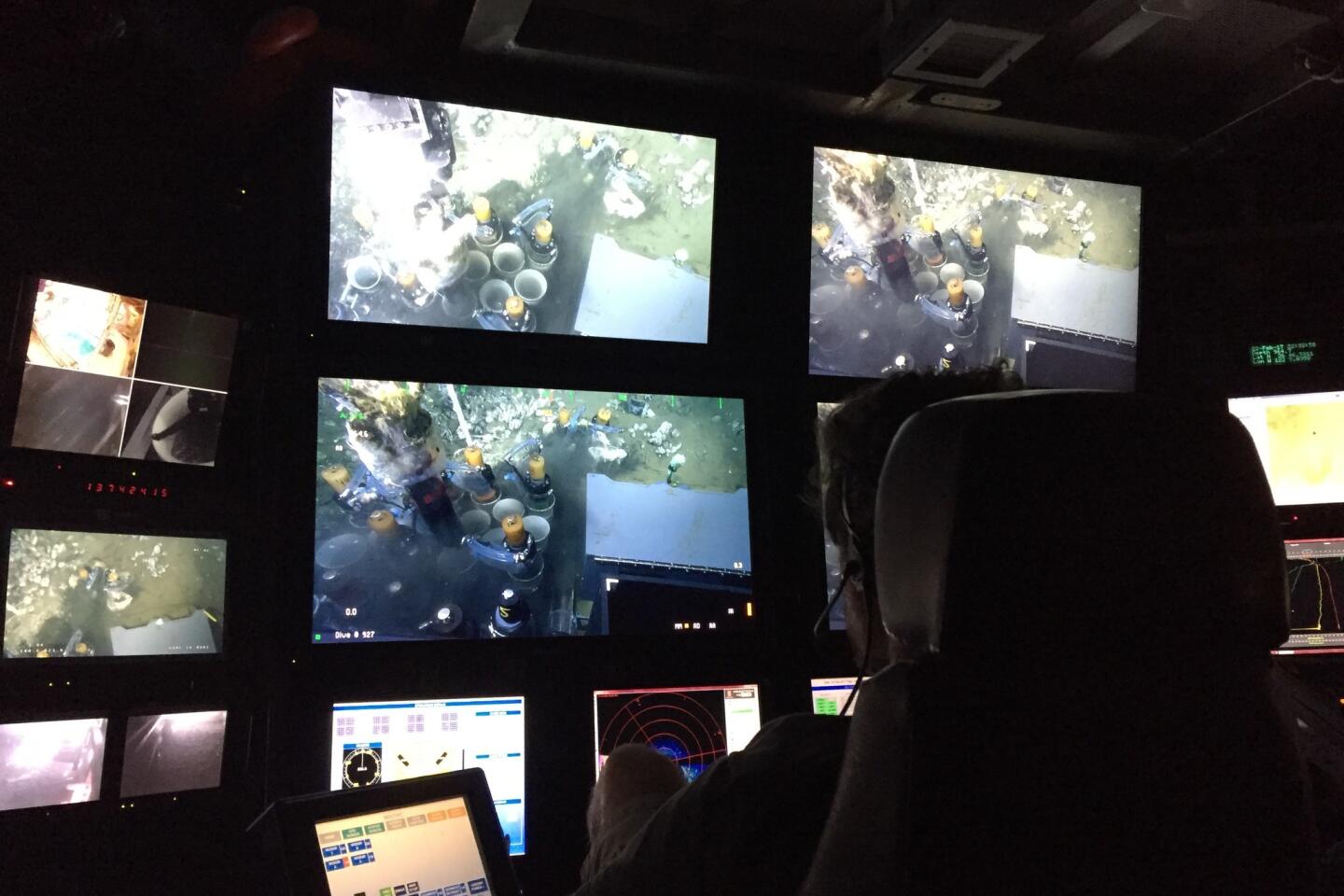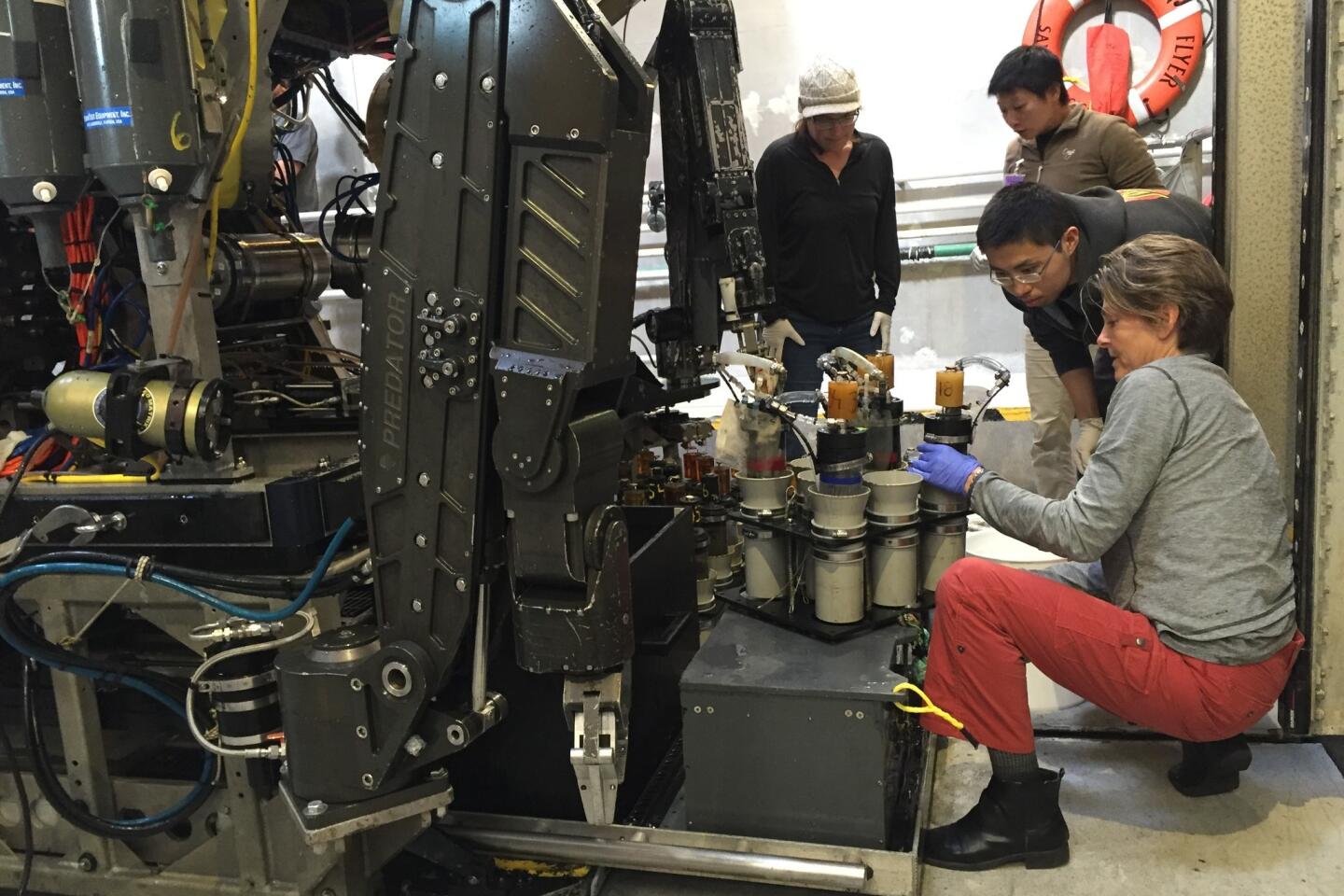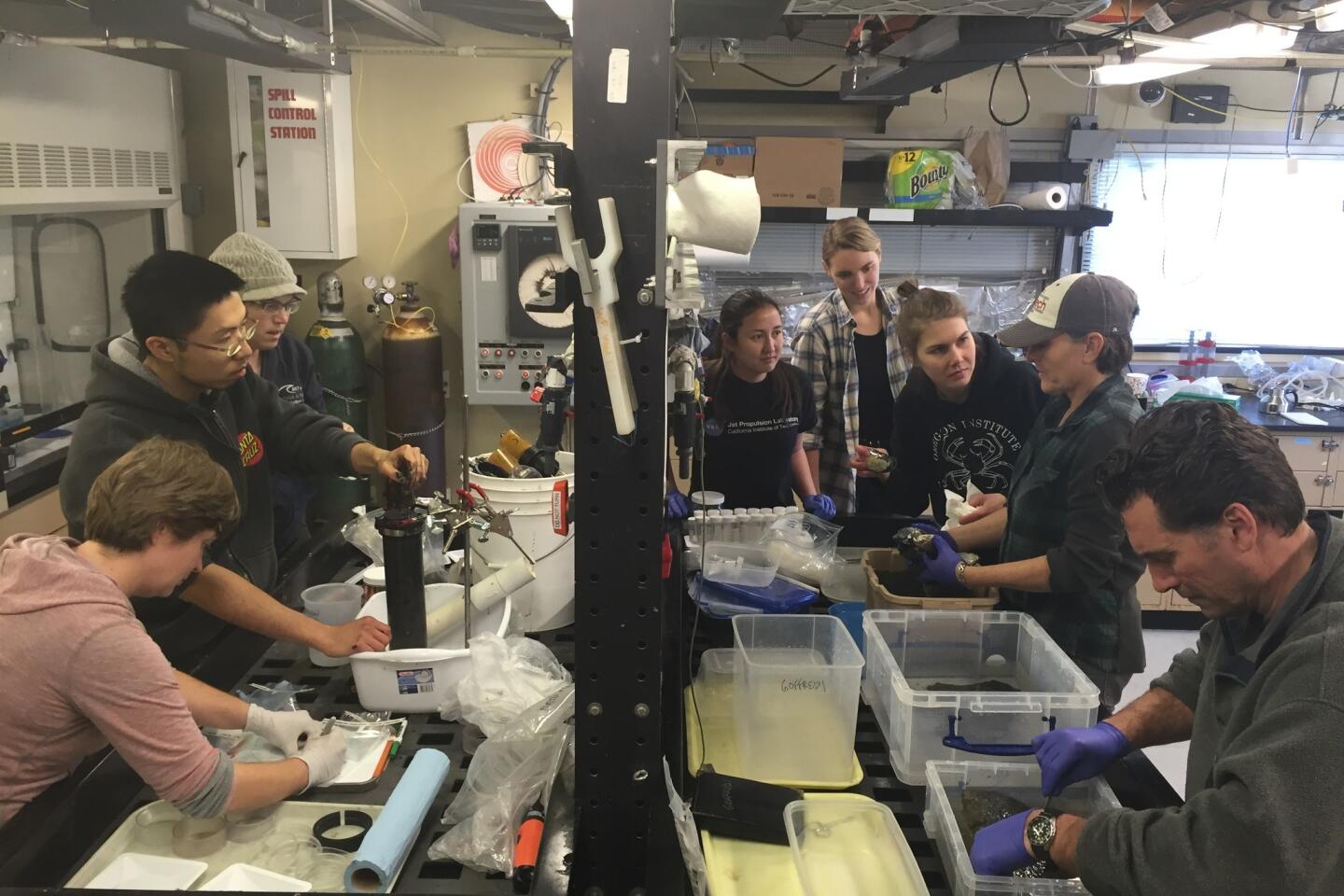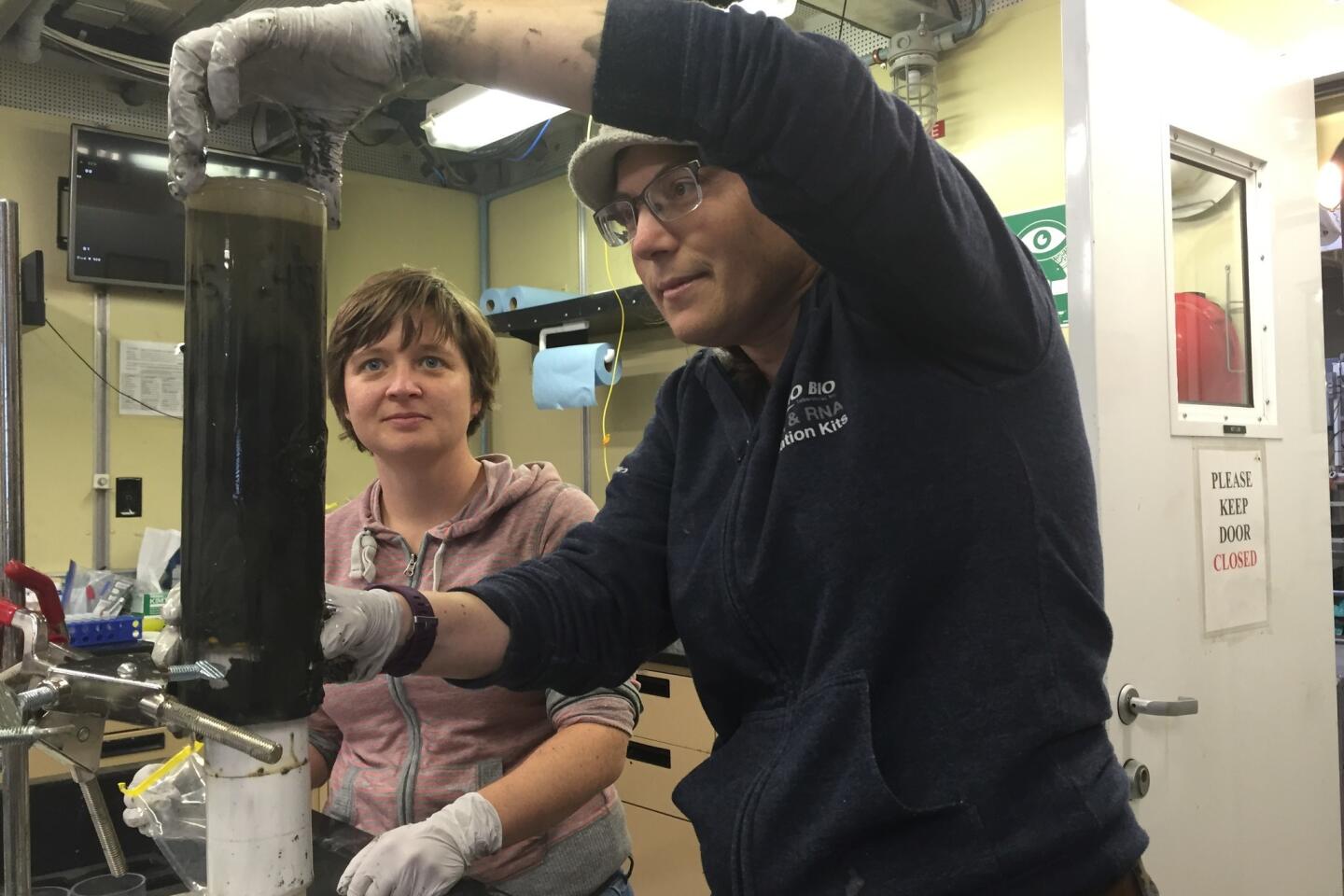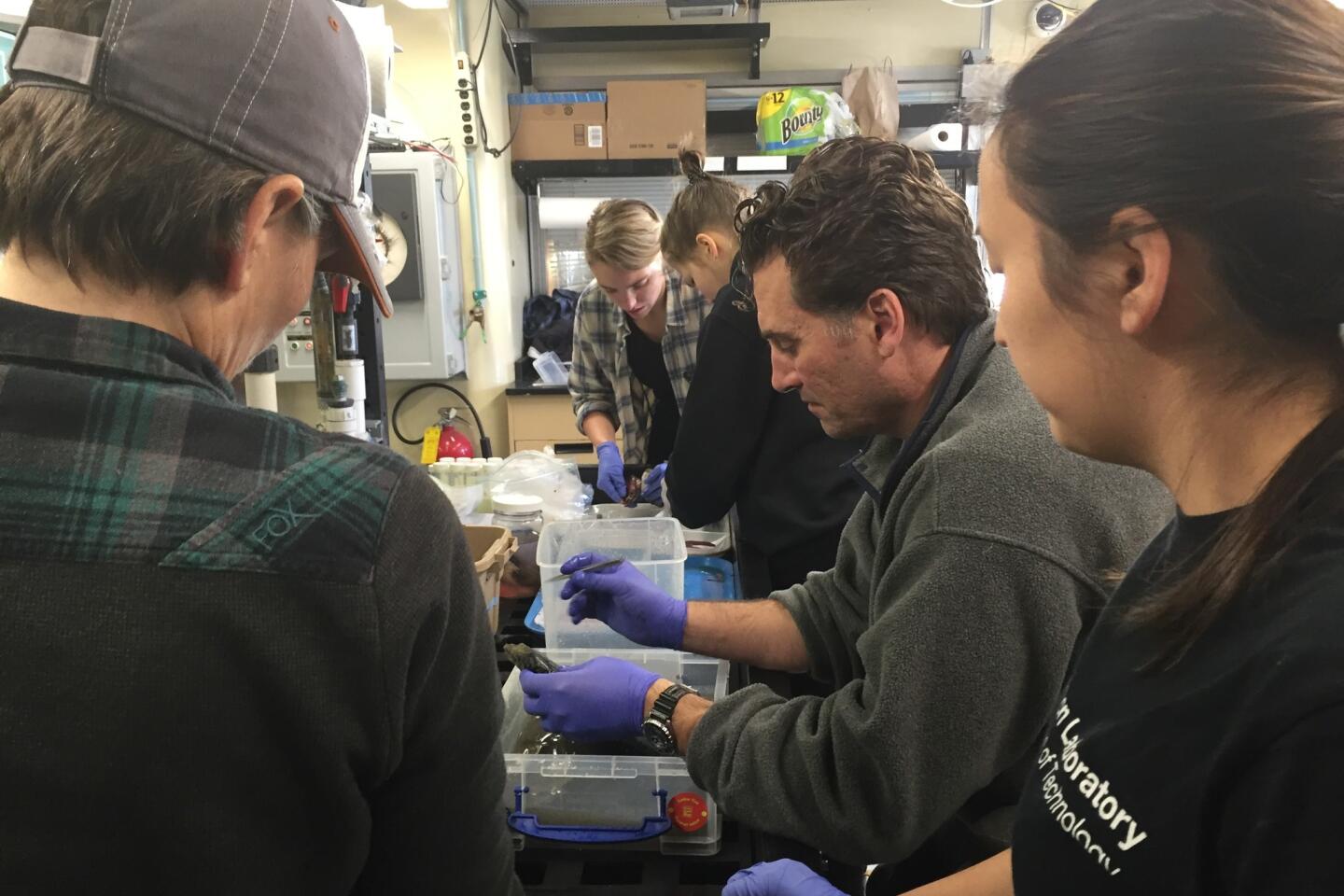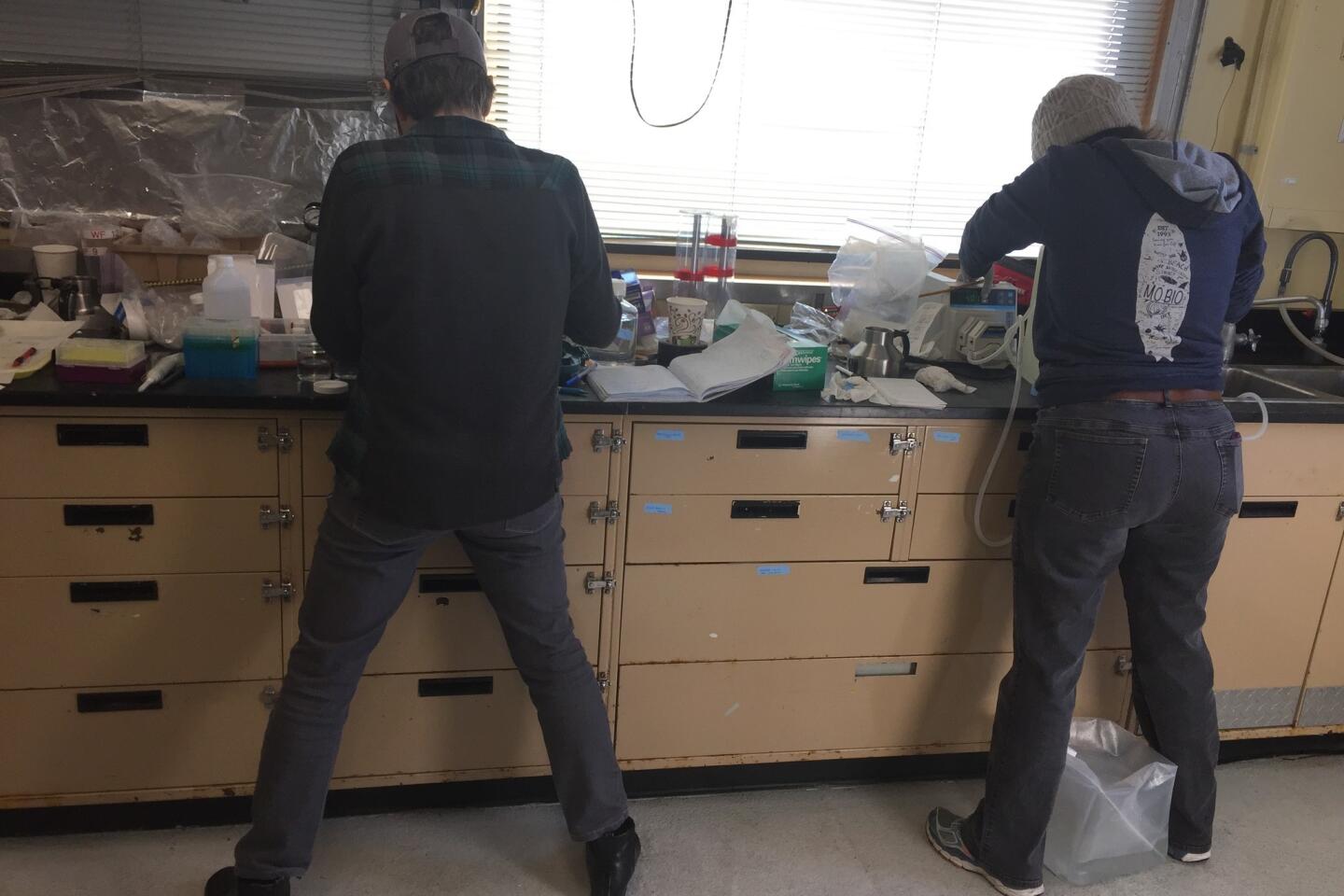A search for some of Earth’s most extreme creatures in the West Coast’s deepest underwater canyon
- Share via
Geobiologist Victoria Orphan stands at the stern of the research vessel Western Flyer, watching her colleagues put the last touches on an unusual spread. Among the offerings: a large turkey leg, an alligator head and bowls of gelatinous agar that resemble consomme.
This meal isn’t for the ship’s crew, though. It’s bait.
The entrees are anchored to a plastic grid and pushed overboard so they will sink into the deepest underwater canyon along North America’s west coast.
The scientists check the attached camera, which will spy on the creatures that show up to feast — fish, worms, crabs and microbes too.
The microbial denizens of Monterey Canyon are far different from many of their surface-dwelling brethren. They make food out of rocks and dead debris and harvest energy from methane that seeps from the ocean floor. To survive in this dark, high-pressure, low-oxygen, low-nutrient environment, they form all kinds of cooperative relationships.
Orphan adjusts an agar bowl’s position and then heads back in to check on the tube-shaped samplers she’ll use to collect microbe-filled sediment.
“They’re not quite as exciting as alligator heads,” she says.
Orphan is being modest. Her study of these “extremophiles” may offer insights about the evolution of life on Earth — and guide the search for life on other planets. Her work earned her a MacArthur Fellowship award, also known as a “genius” grant.
Much of her research takes place at Caltech, where she runs a lab with dozens of graduate students and postdoctoral researchers. But expeditions like this, miles off the California coast in Monterey Bay, are a crucial part of her work.
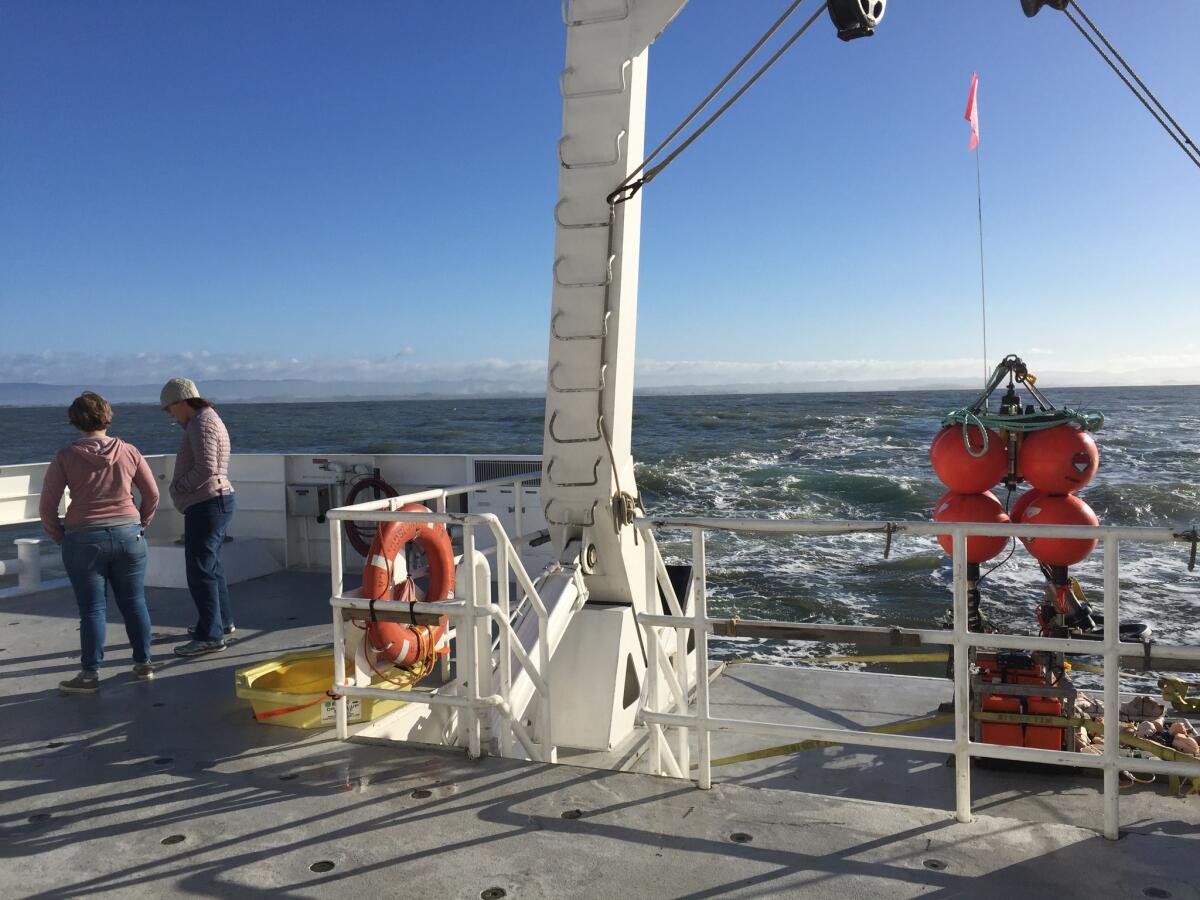
Orphan is co-leading this trip with Shana Goffredi, a biologist at Occidental College who is also her life partner. Where Orphan studies microbial alliances, Goffredi explores the relationships between microbes and larger animals such as clams or snails.
Alligator heads and turkey legs are small fry for this crew. About a decade ago, Goffredi and other scientists at the Monterey Bay Aquarium Research Institute towed the carcasses of dead whales out to the canyon and released them at different depths. The result was an enormous experiment that shed light on the complex population dynamics of these deep-sea communities.
Just as wildflowers blossom in the barren desert after a storm, long-dormant microbes bloom on a “whalefall” as they feast on the carcass alongside crabs, clams and fish. The microbes produce chemicals that other microbes can put to use. The result is a community whose demographics shift dramatically over time depending on the depth and pressure of the ocean.
Orphan and Goffredi visit these whalefalls two or three times per year, sampling the water, wildlife and sediments to discover if something has changed.
“Almost every time, we find a new species,” Goffredi said. “And that’s just the animals.”
The microbes, she added, are guaranteed to produce something that’s never been seen before.
::
The primary purpose of this two-day expedition is to steer an underwater rover into Monterey Canyon, insert chemical-laced sediment samplers and retrieve specimens from the deep.
The rover is a yellow box the size of a cargo van with robotic arms and an array of boxes and canisters to hold whatever it finds. Ever so slowly, it is lowered through the ship’s heart into the roiling waters below.
In a darkened room near the stern, the scientists fix their eyes on monitors fed by the rover’s many cameras. For a long time, it looks like the opening credits of “Star Trek,” with stars hurtling by in an inky blue-black void.
“Marine snow,” Orphan says, her face lighted only by the glow from the screens. “Some of it can be actual animals. There are fecal pellets, or mucus that’s been sloughed off. You think about seawater as being this liquid matrix, but it’s really this living, very dense gel.”
When the rover is more than half a mile beneath the surface, the sandy seafloor comes into view. The pilots and scientists lean forward, looking for any signs of Francisco, the whale they’d sunk around this particular spot.
Finding those old whale bones is not easy. No familiar landmarks come into view. Long minutes of searching stretch to an hour, then more.
Suddenly, the silence is broken.
“The rack of lamb!” Goffredi yells, pointing to the screen.
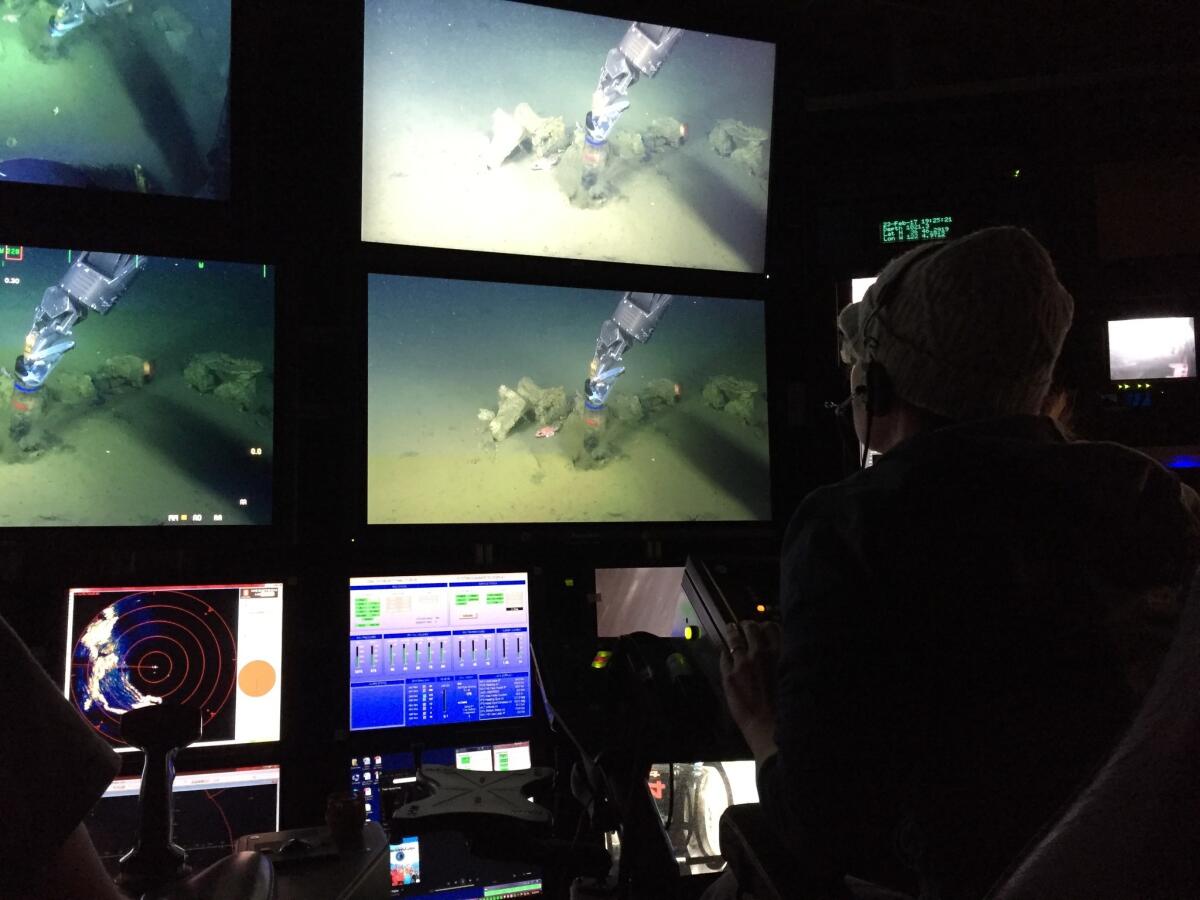
One of the rover pilots uses a robotic arm to grab a cylindrical core sampler. He shoves it deep into a spot Orphan chooses, filling it with sediment. Then he uses a second robotic arm to inject fluid into the container.
This fluid holds heavy water, whose hydrogen atoms have a neutron along with a proton, as well as two molecules that serve as building blocks for proteins and whose nitrogen atoms hold an extra neutron. The microbes will consume these extra-heavy stable isotopes and pass them through the food web from one species to the next.
In a few months, the ship will return and pull the cylinders out of the ground. Then the scientists will analyze the sediment to track the isotopes’ progress through the microbial system. The results will reveal how the microbes eat, grow and share resources with one another.
After collecting cylinders they had planted on their last trip, the rover doubles back to a methane seep so the team can plant more samplers. The pilots set up quickly, knowing they don’t have a lot of time.
The robot is right in the middle of a squeeze when the word comes down: The ocean has grown too choppy, and they must pull out.
Orphan sighs.
“So close,” she says.
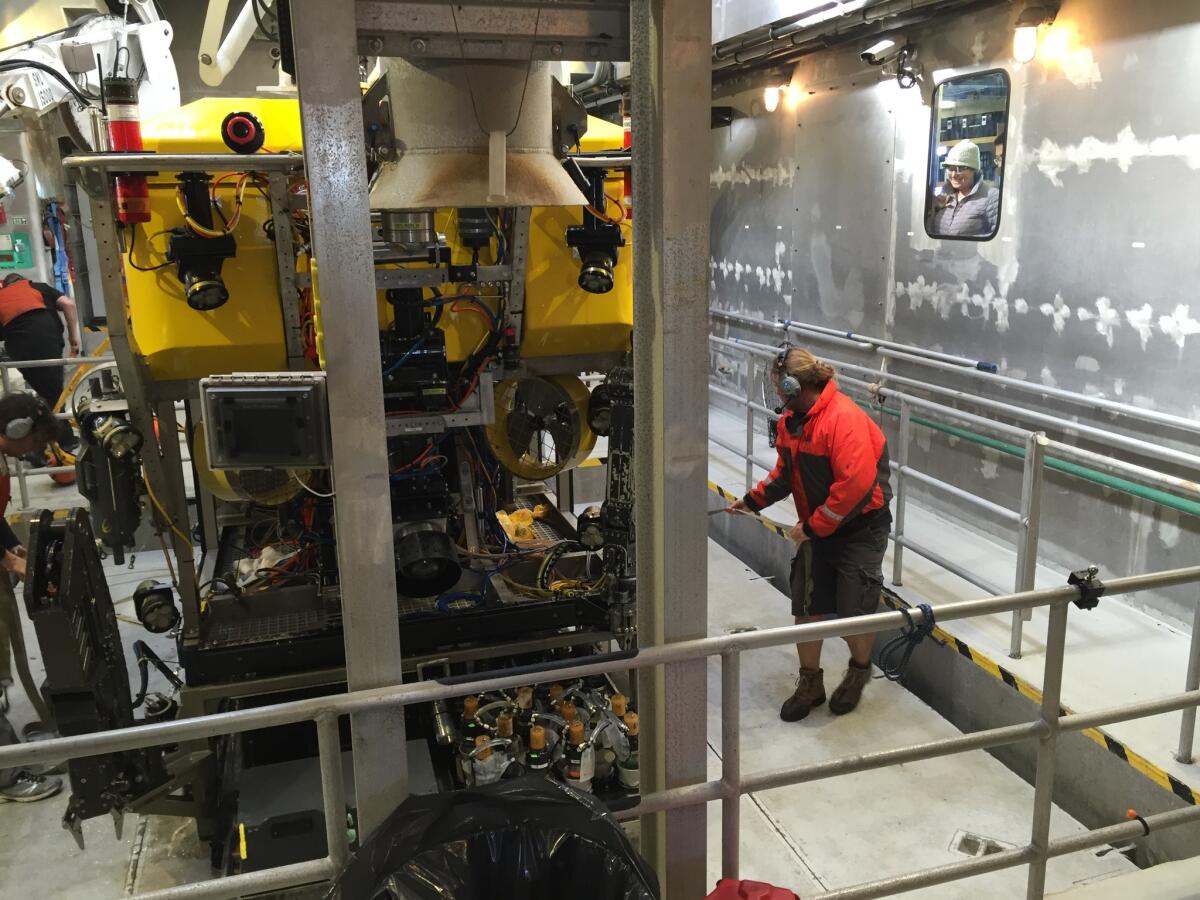
::
The team starts the next day’s dive early, hoping to make up for lost time.
As soon as the sub is pulled out of the water, stuffed with specimens, the researchers rush the samples into the wet lab.
Goffredi’s team starts prying open clams, storing blood in small vials for analysis and preserving the tissue in ethanol.
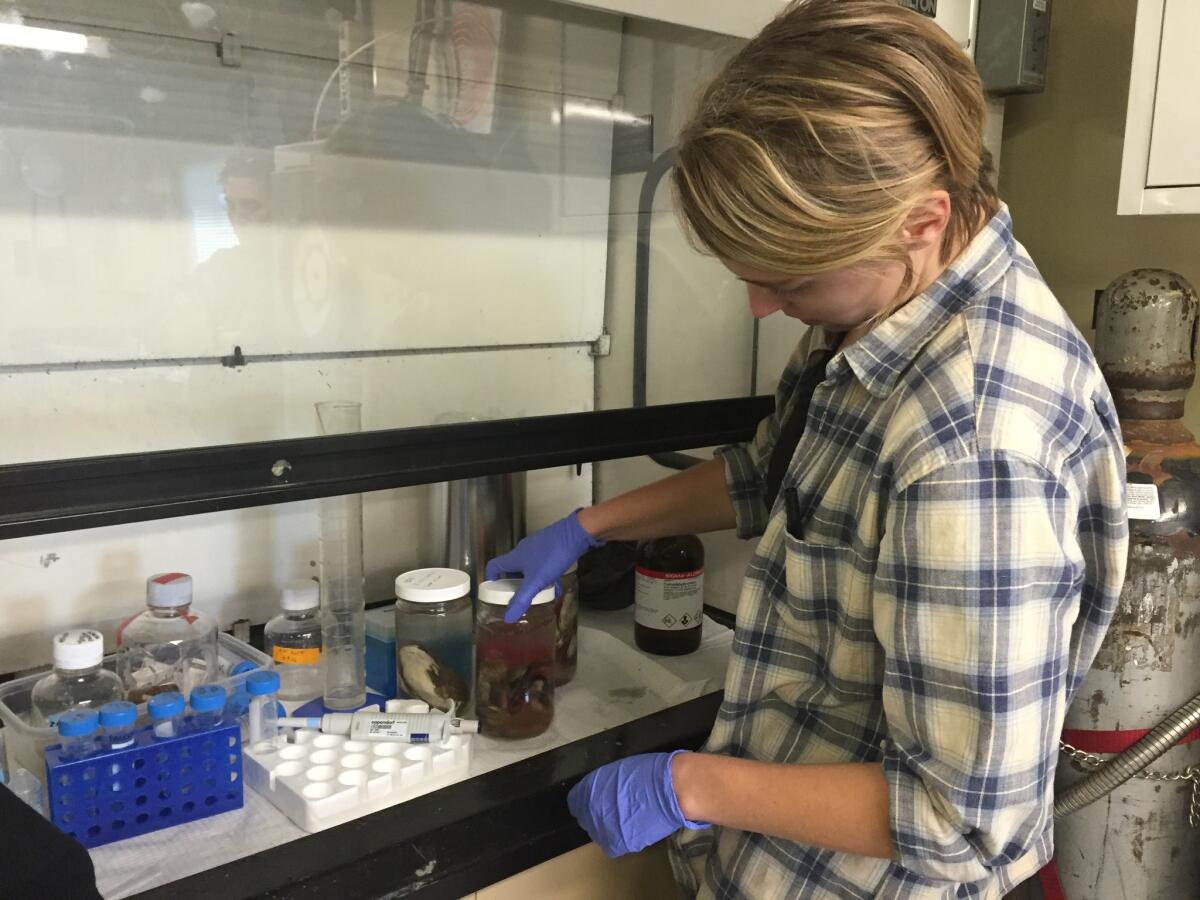
On the other side of the counter, Orphan and four of her researchers carefully cut the cylinders of sediment, placing each slice on a plate labeled according to depth: 0-1 centimeters, 1-2 cm, 2-3 cm, and so on. They plant their feet wide against the swaying of the ship.
Orphan sniffs the open top before she slices, hunting for the rotten-egg scent of hydrogen sulfide.
“She has a gas-chromatographic nose,” Goffredi jokes.
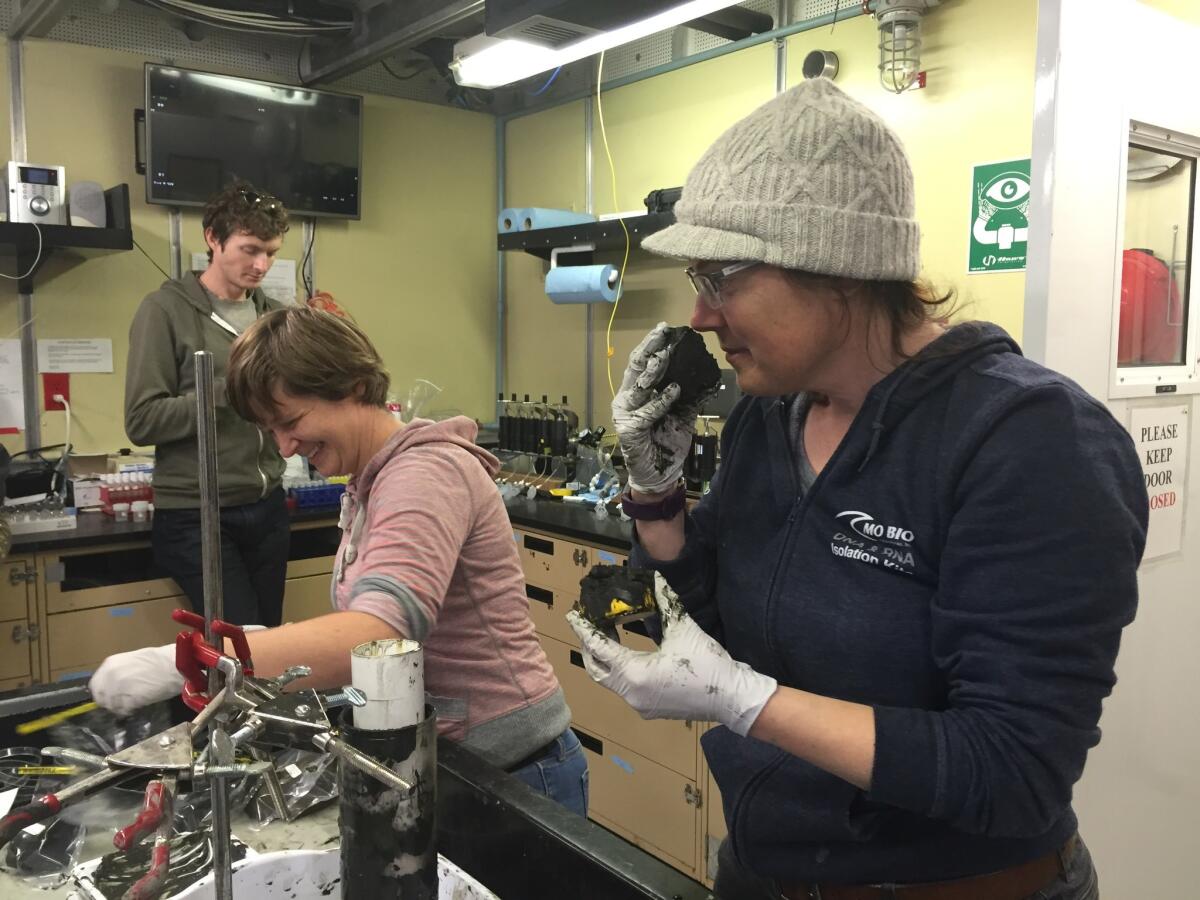
Some of those slices are loaded into small plastic bags and frozen; others are stuffed into a machine that uses argon to squeeze water out of the samples. A few milliliters go into tiny tubes for RNA or DNA analysis.
The water is separated from the solids — different microbes can live in the two different media — and some of it is exposed to a chemical that turns purple and reveals how much iron it contains. Sujung Lim, one of Orphan’s graduate students, fills small vials that she’ll use to test whether any microbes eat chitin, the tough, abundant protein in the exoskeletons of crabs and many other sea creatures.
Katherine Dawson, a postdoctoral scholar in Orphan’s lab who’s since become an assistant professor at Rutgers University, uses a spoon to fill sample holders for the squeezing apparatus. It’s hard to find a teaspoon that fits the narrow barrels, but these ones are locally sourced.
“Caltech dining services has helped us out … whether they know it or not,” she says with a laugh.
With everyone working at double-speed, Lonny Lundsten of the Monterey Bay Aquarium Research Institute uses tweezers to pick over a chunk of wet whale bone, searching for feathery Osedax worms. They dissolve the bone with acid and send long thin “roots” deep inside.
Bacteria live in these roots and aid the worms in some unknown way; how the bacteria and worm find each other in the depths of the ocean is something the scientists hope to find out.
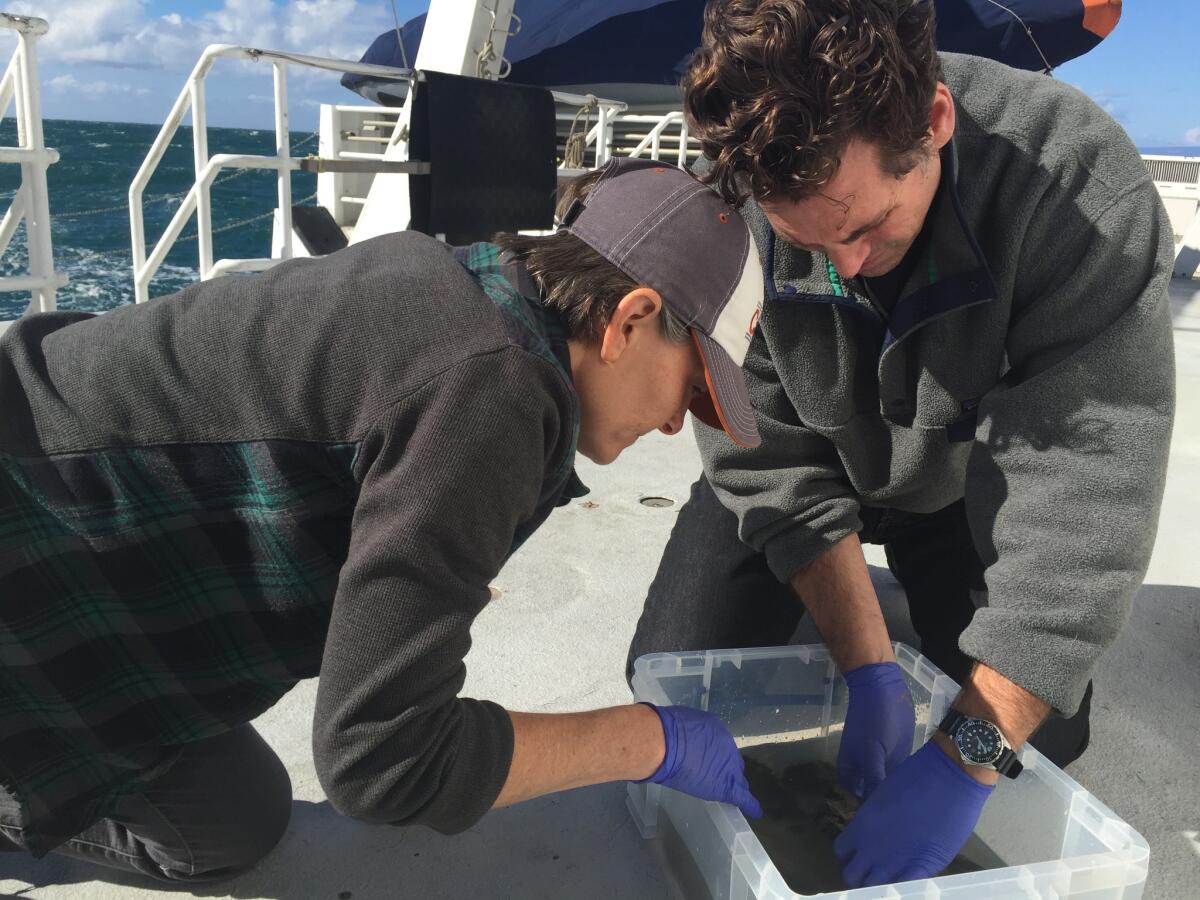
In some ways, it’s emblematic of how little is known about life in the oceans.
“It has such an important, vital role in making the planet a habitable place for us, and we don’t know anything about it,” Goffredi said.
“It’s great that we’re exploring the universe, but there’s a lot about our deep sea” that remains a mystery, she added.
When Orphan gets her microbes back to Caltech, she hopes to set up a tiny deep-sea ecosystem in her lab. Then she could see how they interact with one another in different situations.
The geobiologist’s enthusiasm for her marine microbes knows no limits. She’s gathered a lot of samples this time, and her team rushes to process them.
“My eyes are bigger than my minus-80 freezer,” she says with a sigh.
“We call it the Victoria 30% factor,” Lim deadpans.
The whale bones, however, won’t find a permanent home at the lab. They belong in the ocean, the scientists say — and on a future trip to the canyon, they’ll be returned to their final resting place.
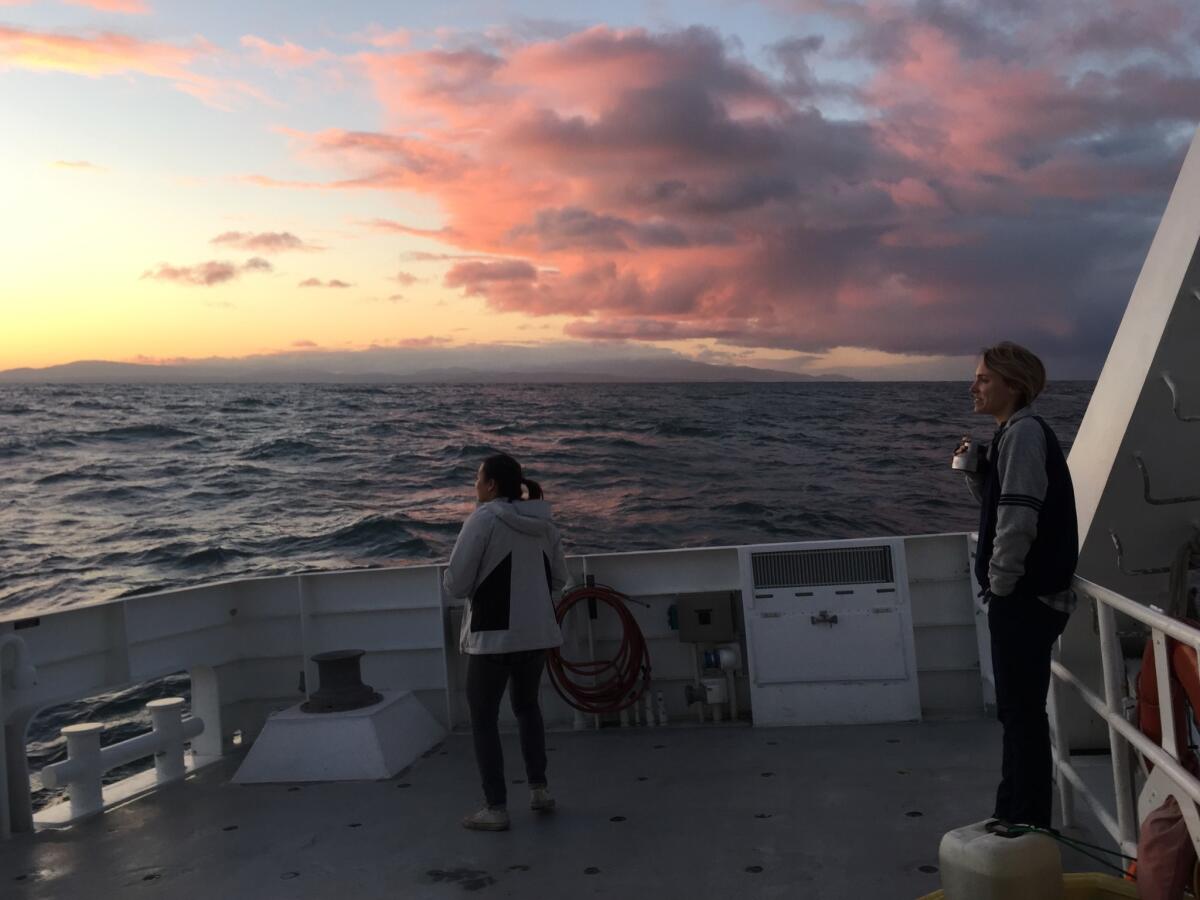
Follow @aminawrite on Twitter for more science news and “like” Los Angeles Times Science & Health on Facebook.
MORE IN SCIENCE
NASA is about to step up its planet-hunting game with the launch of TESS
Corals on Great Barrier Reef will never be the same after back-to-back heat waves, scientists say
One of the solar system’s early planets didn’t survive, but its diamonds are now on Earth
